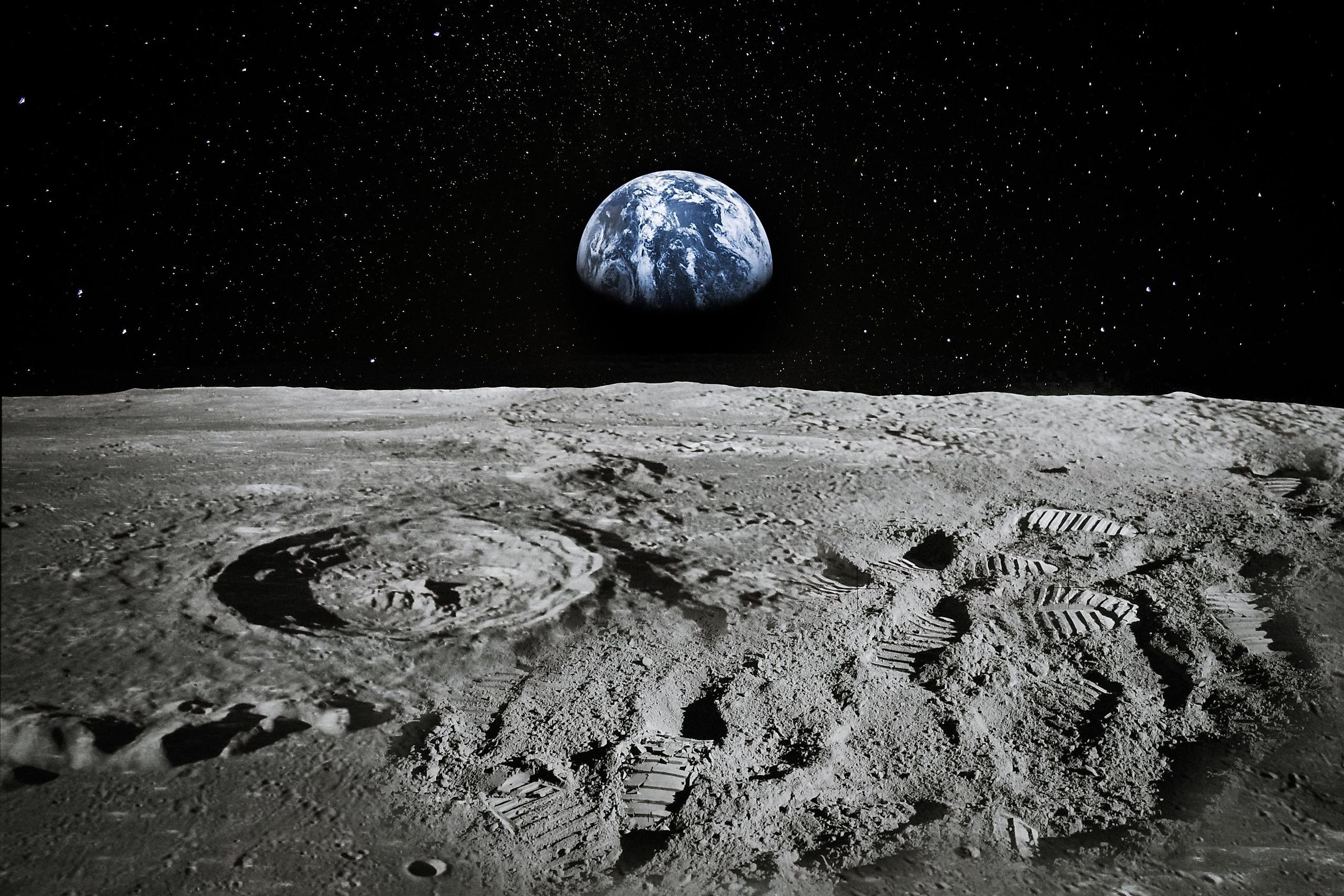
Biggest Moons In Our Solar System
The solar system has no shortage of moons. Like the planets they orbit, they are each unique in their own way. Some moons are so large that if they were orbiting the Sun instead of a planet, they would likely be considered planets in their own right. Others are so small that they are more closely related to asteroids and meteors than the planets. The solar system contains hundreds of individual moons, the majority of which orbit Jupiter and Saturn. In fact, Jupiter and Saturn have so many moons that scientists continue discovering more in their orbits. Since there are so many moons, it would be difficult to list them all and compare their size. Instead, let us focus on the ten biggest moons in the solar system.
Ganymede
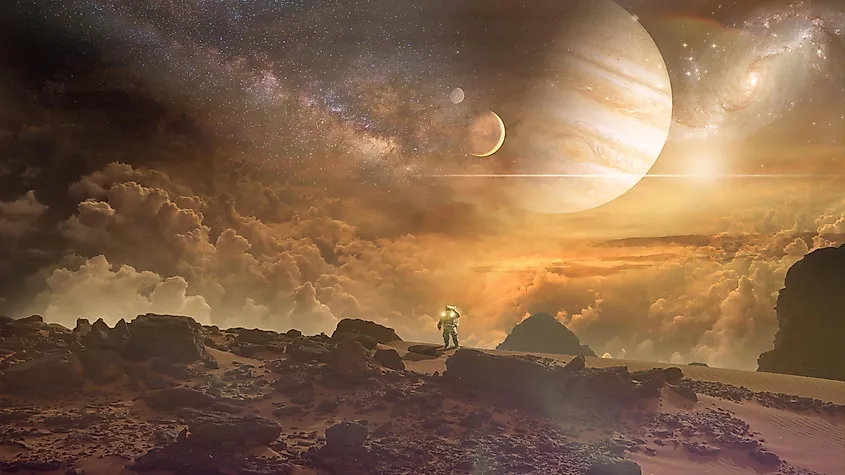
Orbiting the planet Jupiter is the solar system’s largest moon. Called Ganymede, it has a diameter of 3,275 miles (5,270 kilometers). This makes Ganymede even larger than the planet Mercury, which has a diameter of 3,032 miles (4,879 kilometers). If Ganymede formed in orbit around the Sun rather than Jupiter, it would likely be defined as a planet. Ganymede was one of the first planets to be discovered in our solar system. In 1610, the astronomer Galileo Galilei pointed a telescope toward Jupiter and identified four points of light surrounding the giant planet. After several observations, Galileo determined that these four points of light were orbiting Jupiter. Galileo discovered that these four objects were moons in orbit around Jupiter, and they were later named the Galilean moons of Jupiter. Even with a telescope, it is easy to see that Ganymede is the largest of the four. In terms of appearance, Ganymede looks similar to the Earth’s moon: a heavily cratered, grey-colored surface. However, appearances can be deceiving. Ganymede is a unique planet, and it is the only moon in the solar system that produces its own magnetic field. Furthermore, it is believed that Ganymede may have an ocean of liquid water beneath its crust. Ganymede orbits Jupiter at a distance of 665,00 miles (1.07-million kilometers) and completes one orbit every seven Earth days.
Titan
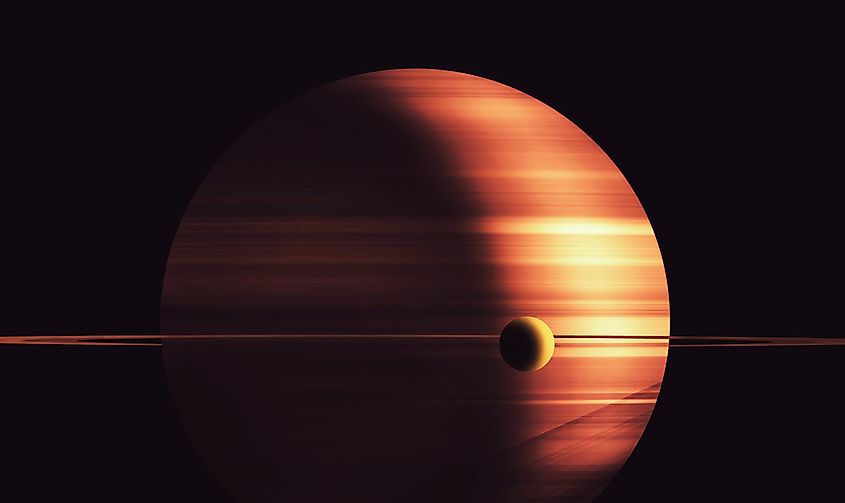
The second-largest moon in the solar system is Saturn’s largest moon, Titan. It is only slightly smaller than Ganymede, with a diameter of 3,200 miles (5,150 kilometers). Like Ganymede, if Titan were to orbit the Sun rather than a planet, it would be considered a planet itself. Titan was discovered by the astronomer Christiaan Huygens in 1655, yet pretty much everything about Titan would remain a mystery for centuries. In 1944, the astronomer Gerard Kuiper discovered that Titan has a significant atmosphere, unlike most moons in the solar system. It may be similar in size to Ganymede, but Titan is a vastly different world. Not only does it have an atmosphere, but it also has an intriguing surface.
Unfortunately, the surface of Titan is hidden beneath its dense atmosphere of hydrocarbons. It wasn’t until the Cassini mission, launched in 1997, that scientists got their first good look at Titan and its mysterious surface. When Cassini arrived at Saturn in 2004, it deployed the Huygens probe. Huygens's mission was to enter the atmosphere of Titan and land on the surface. Huygens gave scientists their first good look at the surface, revealing a world that looked more like the Earth than a typical moon. The exterior was covered in rivers, streams, lakes, and seas. However, unlike the Earth, temperatures on Titan are far too cold for water to exist in liquid form. Instead, the liquid on Titan’s surface is liquid methane and ethane. It even rains liquid methane on the surface. Titan and Earth are the only two known worlds in the solar system where it rains. Titan orbits Saturn at a distance of 759,000 miles (1.2 million kilometers) and completes one orbit every 16 Earth days.
Callisto
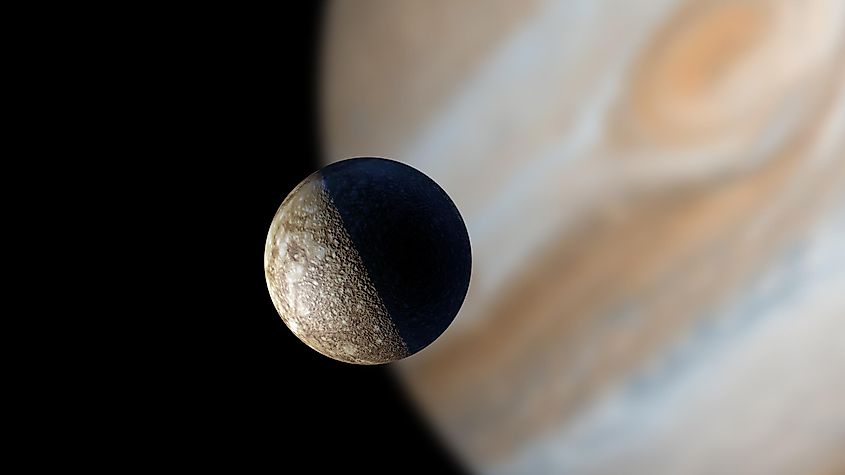
In 1610, Galileo discovered the four large moons of Jupiter. The furthest from Jupiter was called Callisto. Callisto is the second-largest moon of Jupiter and the third-largest in the solar system overall, having a diameter of 2,995 miles (4,820 kilometers). The surface of Callisto is heavily cratered, and it is likely the least active world in the solar system. There is little to no history of geologic activity on Callisto, so its surface has experienced virtually no change over its 4.5-billion-year history. Callisto has the oldest known surface in the solar system. Callisto orbits Jupiter at a distance of 1.17-million miles (1.88-million kilometers), making it the farthest moon from Jupiter. It takes Callisto 17 Earth days to complete one orbit around Jupiter.
Io
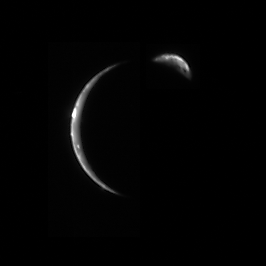
Io is one of the four Galilean moons of Jupiter discovered by Galileo in 1610. Io is the innermost moon of Jupiter and has a diameter of 2,264 miles (3,643 kilometers). Although Galileo discovered Io over 400 years ago, virtually everything about Io was a mystery until the Voyager flybys in the late 1970s. When scientists received the first close-up images of Io, what they saw was incredible. The surface was entirely devoid of impact craters, which is strange given the number of craters on other moons around Jupiter. Stranger still was that Io’s surface was covered in various colors, including yellow, red, and green. Io looked completely different compared to any other moon. When scientists were analyzing Voyager’s images of Io, one stood out.
This particular image of Io had a strange crescent shape just off the surface of Io. At first, scientists assumed that this crescent was just another moon behind Io. However, the orbital paths of nearby moons didn’t match up with the image. They soon realized that they were observing a volcanic eruption on Io. The crescent was volcanic material erupting from the surface and escaping into space. Io turned out to be the most volcanically active world in the solar system, having over 400 confirmed active volcanoes. This was a surprise for a moon only slightly larger than our moon.
Generally, small planets lose internal heat quickly after they form. As a result, most moons in the solar system are cold and inactive. There is no energy to power geologic activity without any internal heat that would otherwise reshape the surface. That’s why most moons are covered in craters. Io seemingly breaks this rule. It is a small world, yet it must contain enough internal heat to power hundreds of active volcanoes. The source of Io’s internal heat comes from friction in its core. This friction is created as Jupiter’s gravity tugs on Io, compressing and stretching the moon. Io orbits Jupiter at a distance of 262,000 miles (421,700 kilometers) and completes one orbit every 1.8 Earth days.
The Ten Biggest Moons
| Rank | Moon | Planet | Diameter |
|---|---|---|---|
|
1 |
Ganymede |
Jupiter |
3,275 miles (5,270 km) |
|
2 |
Titan |
Saturn |
3,200 miles (5,150 km) |
|
3 |
Callisto |
Jupiter |
2,995 miles (4,820 km) |
|
4 |
Io |
Jupiter |
2,264 miles (3,643 km) |
|
5 |
Moon |
Earth |
2,159 miles (3,475 km) |
|
6 |
Europa |
Jupiter |
1,940 miles (3,122 km) |
|
7 |
Triton |
Neptune |
1,682 miles (2,707 km) |
|
8 |
Titania |
Uranus |
980 miles (1,578 km) |
|
9 |
Rhea |
Saturn |
950 miles (1,529 km) |
|
10 |
Oberon |
Uranus |
946 miles (1,523 km) |











